Table of Contents
Overview – The Gastrointestinal Examination
The gastrointestinal examination is a fundamental clinical skill used to identify signs of liver, bowel, pancreatic, and systemic disease. It involves full-body inspection with detailed abdominal palpation, percussion, and auscultation. The gastrointestinal examination is essential for recognising signs of acute abdomen, liver failure, portal hypertension, malignancy, malabsorption, and systemic conditions like Crohn’s disease or Wilson’s disease.
Definition
The gastrointestinal examination is a systemic physical assessment used to identify signs of pathology affecting the gastrointestinal tract, liver, pancreas, and associated structures. It combines general inspection, vital signs, and abdominal assessment with regional signs found in the hands, face, and lower limbs.
General Inspection
- Consciousness:
- Altered mental status → Hepatic or uraemic encephalopathy
- Pain/Distress:
- Acute abdomen causes → Appendicitis, pancreatitis, cholecystitis, perforation, obstruction
- Body Habitus:
- Obesity → Diabetes, GORD, fatty liver, ascites
- Cachexia → GI malignancy, Crohn’s disease, ulcerative colitis, malabsorption
- Skin/Colour:
- Jaundice → Hepatitis, cholelithiasis, liver failure, haemolysis
- Pallor → Anaemia from GI bleed or malabsorption
- Hyperpigmentation → Haemochromatosis
- Bruising/petechiae → Liver failure, haematological malignancy
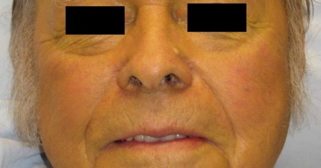
Vital Signs
- Pulse:
- Tachycardia → Anaemia, pain, infection, blood loss
- Atrial fibrillation → Alcohol-related dilated cardiomyopathy
- Blood Pressure:
- Hypertension → Pain, renal disease
- Hypotension → Hypovolaemia, haemorrhage
- Postural hypotension → Anaemia
- Respiratory Rate:
- Tachypnoea → Pain or anaemia
- Temperature:
- Fever → Infection or inflammation
Hands
- Perfusion:
- Warm and flushed → Carcinoid, thyrotoxicosis
- Cool and dry → Hypovolaemia
- Nails:
- Clubbing → Crohn’s, ulcerative colitis
- Leukonychia, Muehrcke’s lines → Hypoalbuminaemia
- Koilonychia → Iron deficiency
- Blue lunulae → Wilson’s disease

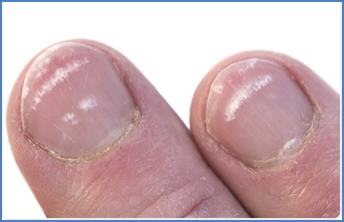
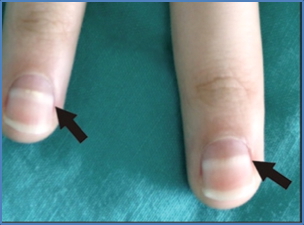
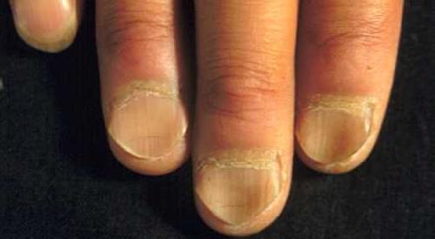
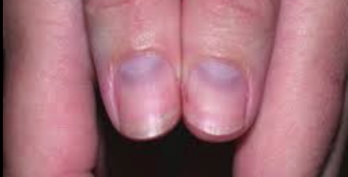
- Palms:
- Pallor → Anaemia
- Palmar erythema → Liver disease (↑oestrogen)
- Other Signs:
- Dupuytren’s contracture → Alcoholic liver disease
- Hepatic flap (asterixis) → Hepatic encephalopathy
- Xanthomata → Dyslipidaemia (PBC, fatty liver, diabetes)
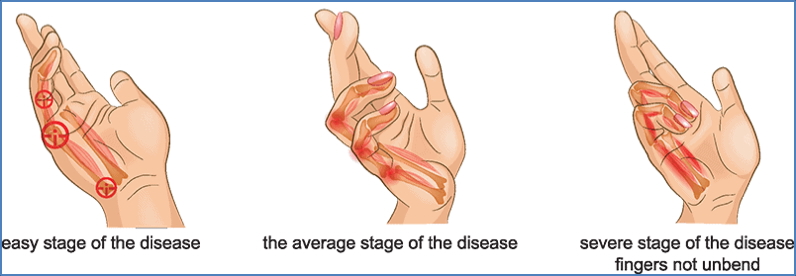
Arms
- Skin:
- Bruising or petechiae → Coagulopathy
- Scratch marks → Uraemic pruritus
- Uraemic frost → End-stage renal disease
- Acanthosis nigricans (axilla) → GI malignancy
Face
Eyes
- Conjunctival pallor → Anaemia
- Scleral icterus → Jaundice
- Kayser-Fleischer rings → Wilson’s disease
- Iritis → Crohn’s, UC
- Xanthelasma → Cholestasis, PBC, diabetes
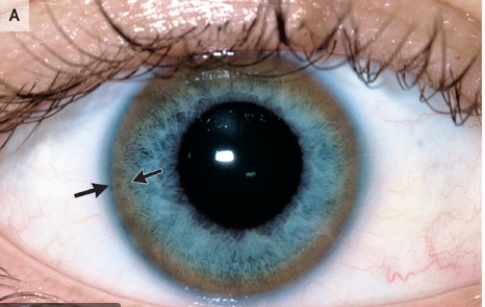
Mouth
- Dry mucosa → Dehydration
- Parotid gland enlargement → Alcoholism
- Cyanosis
- Mucosal ulcers → IBD
- Glossitis/angular stomatitis → B12 deficiency (alcohol, malabsorption)
- Pigmentation (Peutz-Jeghers syndrome)
- Fetor hepaticus
- Mucosal petechiae
- Leucoplakia → Smoking, alcohol


Neck
- Lymphadenopathy:
- Left supraclavicular node (Virchow’s node) → Gastric or GI malignancy
Chest
- Gynaecomastia → Liver failure (↑oestrogen)
- Spider naevi (>3) → Chronic liver disease
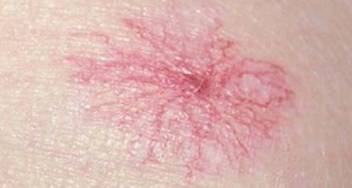
Abdomen
Inspection
- Distension → Ascites, bowel obstruction
- Scars → Past surgeries
- Masses/Visible peristalsis → Obstruction or malignancy
- Caput medusae → Portal hypertension
- Skin signs: Striae, bruising, shingles rash
- Periumbilical (Cullen’s) or flank bruising (Grey Turner’s) → Pancreatitis or haemoperitoneum
Palpation
- Light: Tenderness, guarding, rebound tenderness → Peritonitis
- Deep: Masses
- Liver:
- Hepatomegaly → Hepatitis, fatty liver, cancer
- Small liver → Cirrhosis
- Pulsatile liver → Tricuspid regurgitation
- Spleen:
- Splenomegaly → Infection, haematological malignancy
- Other:
- Ballotable kidneys
- Aortic aneurysm
- Para-aortic nodes → Malignancy or infection
Special Tests
- Cholecystitis: Murphy’s sign
- Appendicitis: Rovsing’s, Psoas, Obturator, McBurney’s point
- Renal colic: Murphy’s kidney punch
Percussion
- Shifting dullness → Ascites
- Percussion of liver/spleen → Size assessment
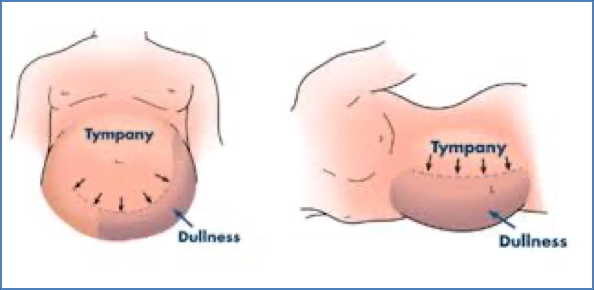
Auscultation
- Bowel sounds:
- Absent → Ileus
- Bruits:
- Renal artery bruit
Note: Perform digital rectal exam if indicated (blood, melaena, mass)
Legs
- Pitting oedema → Liver failure, nephrotic syndrome
- Bruising → Coagulopathy
- Varicose veins → Portal hypertension
Feet
- CRT/perfusion check
- Xanthomata → Hyperlipidaemia from biliary disease or PBC
- Leukonychia → Liver failure
- Clubbing → IBD
Summary – The Gastrointestinal Examination
The gastrointestinal examination is essential for detecting signs of hepatobiliary disease, intestinal inflammation, malignancy, and systemic complications like anaemia, malabsorption, or chronic liver failure. From clubbing to hepatomegaly, each finding builds a clinically relevant picture. For a broader context, see our Clinical Skills Overview page.